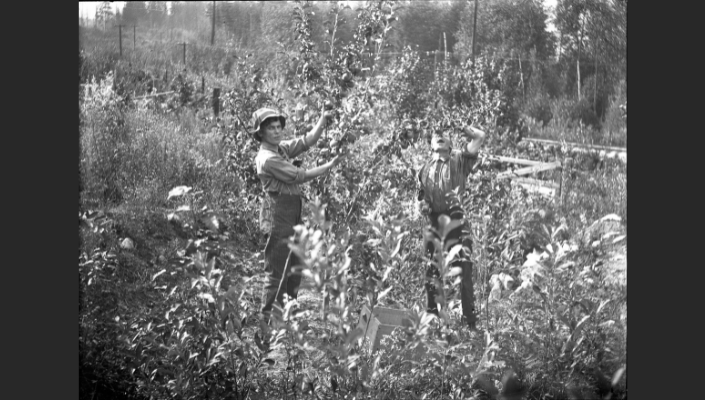One of the difficulties Kootenay growers faced from early in the industry was a late growing season. Okanagan fruit went on the market three weeks earlier than Kootenay fruit, and fruit from Washington and Oregon went on the market three weeks earlier than the Okanagan.
The late growing season became particularly problematic in years of overproduction, for by the time Kootenay fruit was ripe, the market was already saturated. An orchardist from Crawford Bay recalls “that by the time their orchards reached the bearing stage “it was obvious that the market for fruit was going to yield pretty slim pickings.” 24
1912 was an abundant fruit year for growers all over the Pacific Northwest, and as a consequence, “shippers forced prices to disastrous lows in their competition to dispose of their supplies.” 24
Below are two excerpts from an interview with Raymond T. Hickes, manager of the Kootenay Fruit Growers’ association, in the fall of 1912, on the state of affairs after the year of overproduction:
“Crushed by the ruthless competition of American growers, handicapped by climatic conditions and disheartened by the failure of this season’s crop to pay expenses, the fruit growers of British Columbia are, to use a homely phrase, up against it properly, and unless conditions change they will have to get out of the business before every penny invested in the industry is lost in the mire of complete failure,”
“The infant fruit industry of British Columbia is crumbling on its none too strong foundation… and grim failure stares the grower full in the face. The truth may be unpleasant, but to keep the facts of the situation undercover would only hasten the day when the British Columbia fruit men must find other means of securing revenue from their lands. With the exception of apples, not a single fruit grown on British Columbia lands this season has brought back the cost of production to the grower, and the fruit yield this year has been the best in the history of the province…Apples so far are returning to the grower the cost of production and no more.” 25
While the Kootenay orchardists would still have some success in the coming years, the overproduction of 1912 was a clear indication that fruit growing would not be the easy guaranteed money it was advertised to be.
24. Lang, Lost Orchards, page 90
25. The Daily News, Saturday Morning, November 2, 1912
